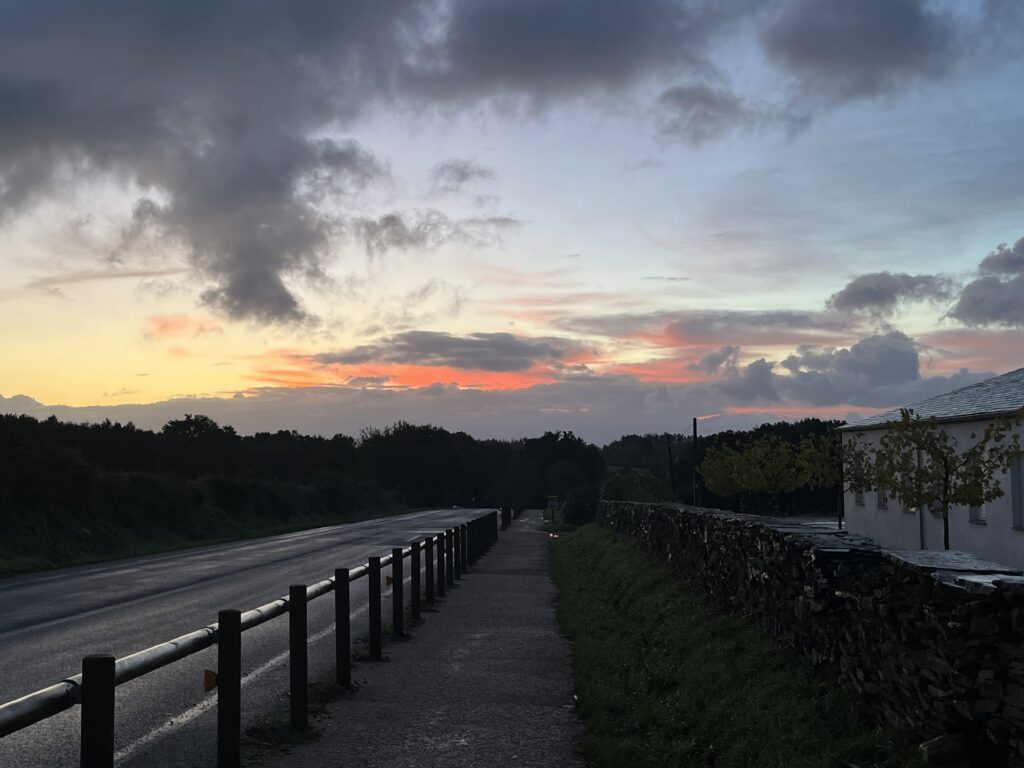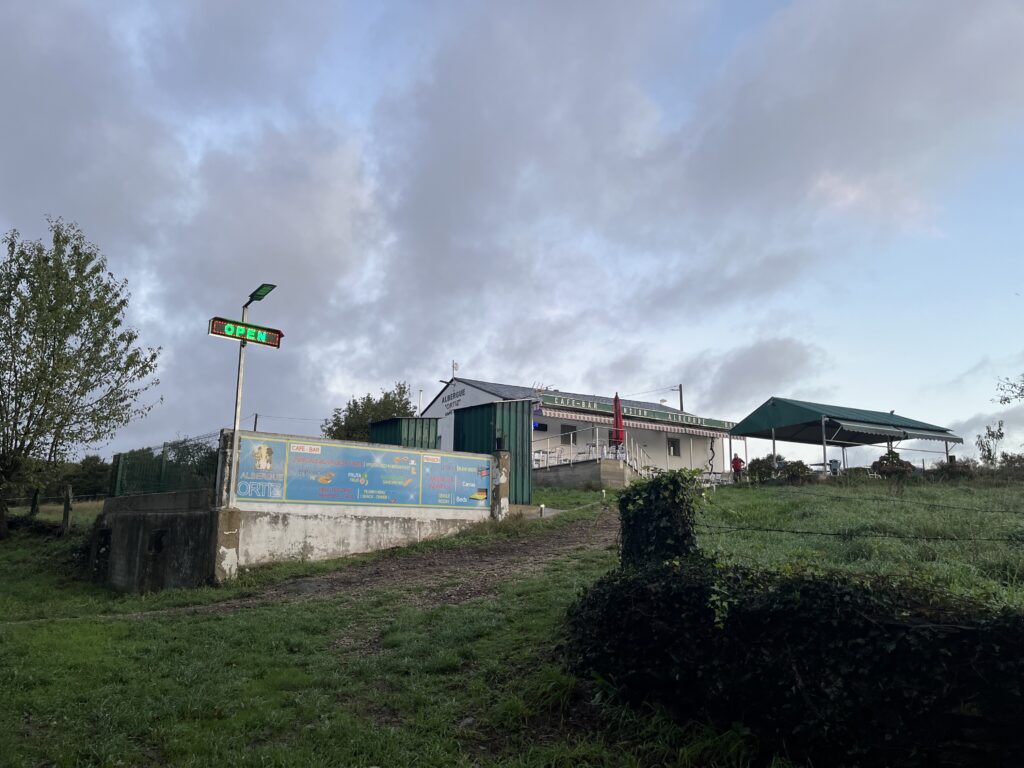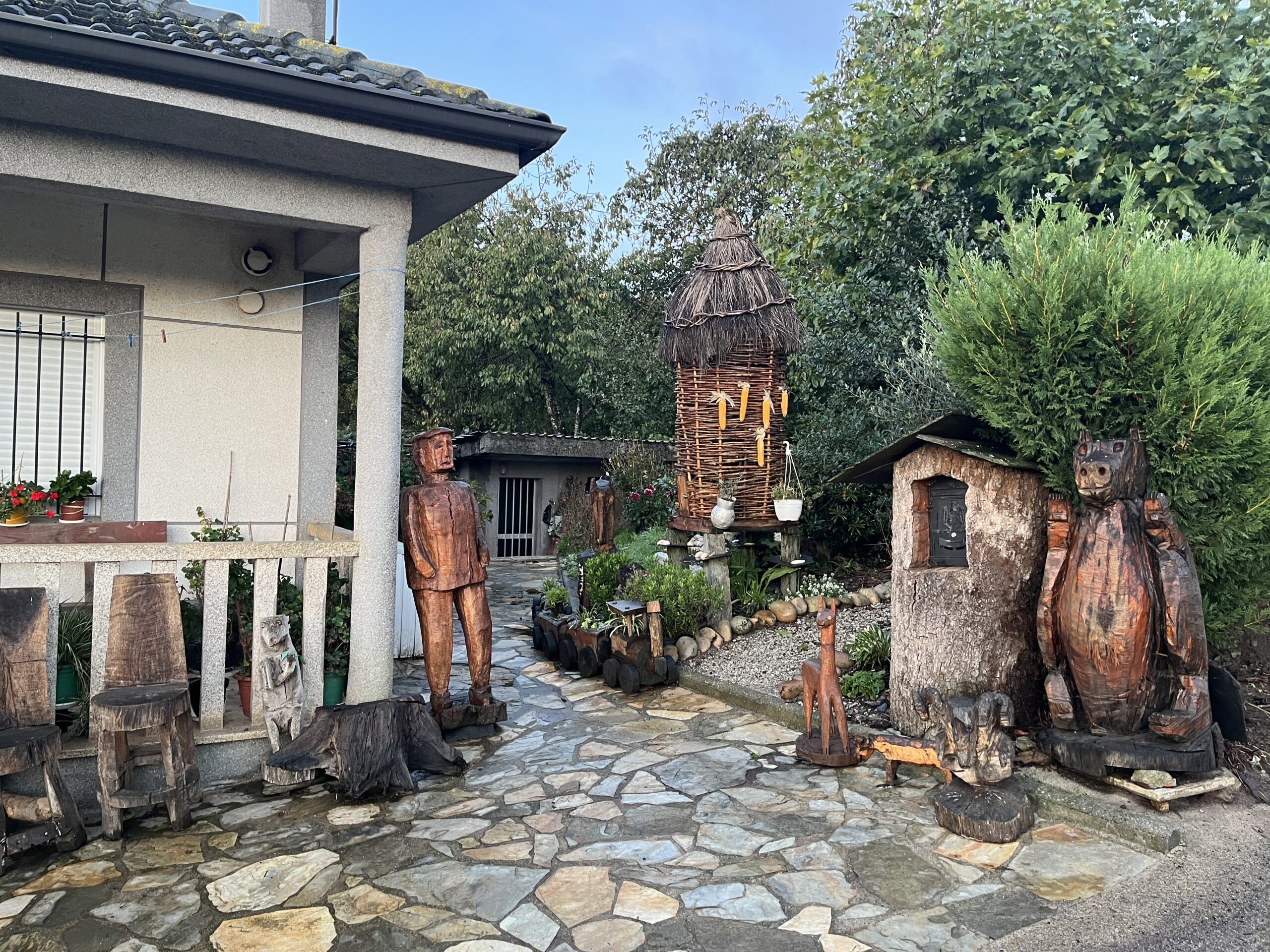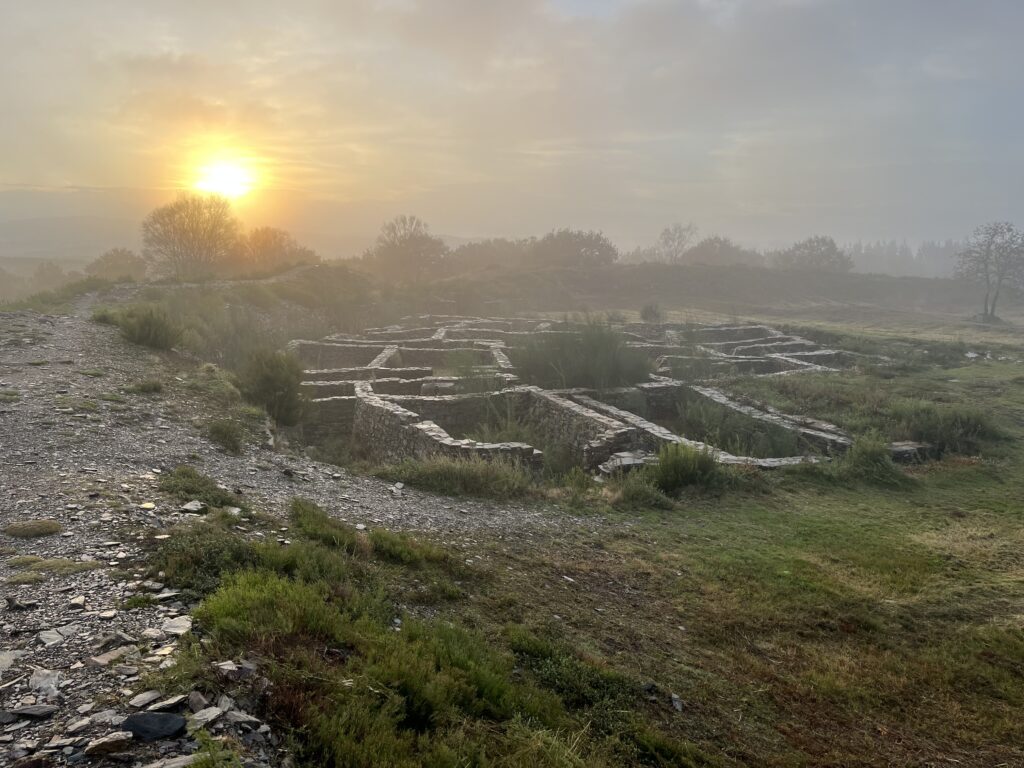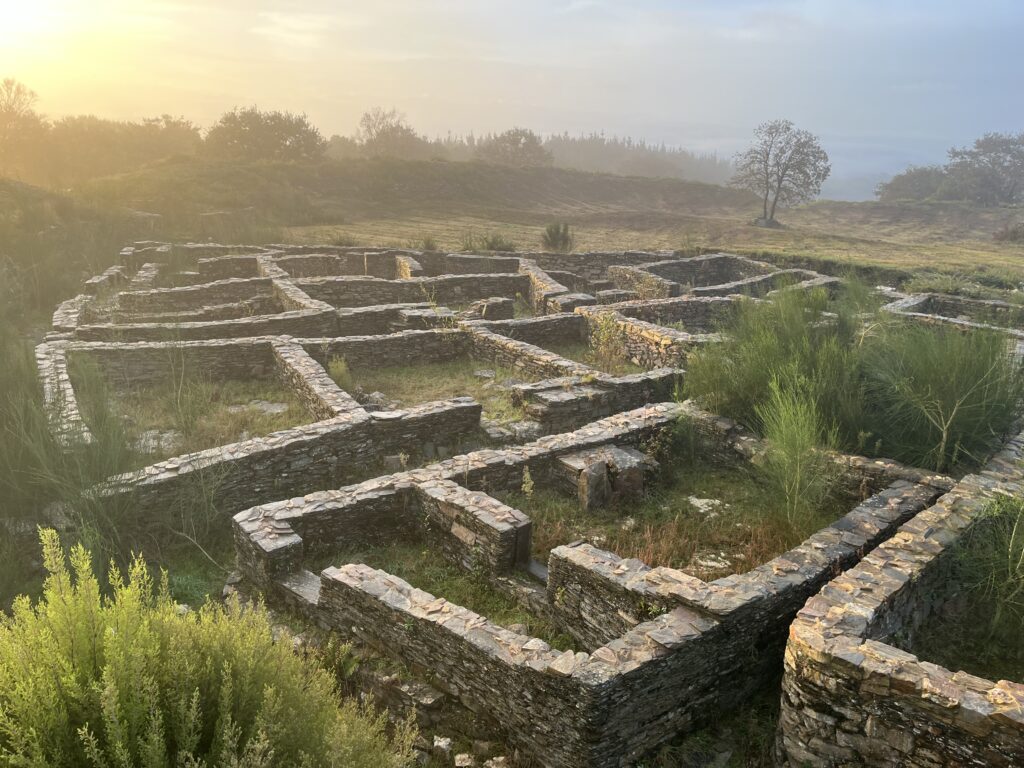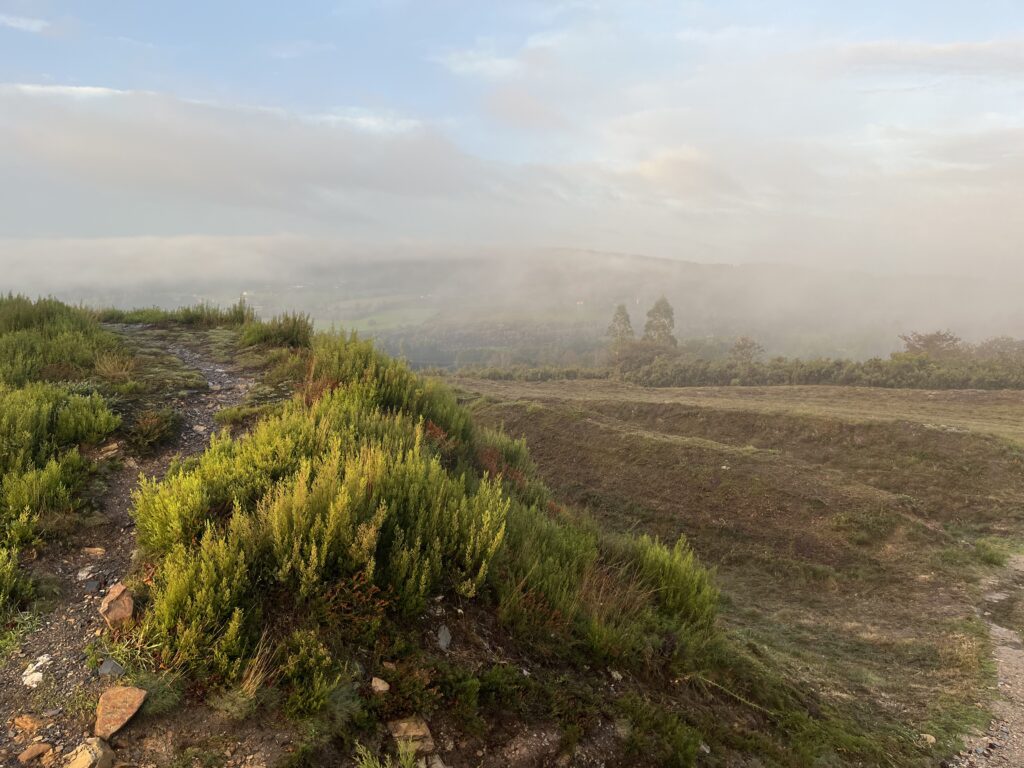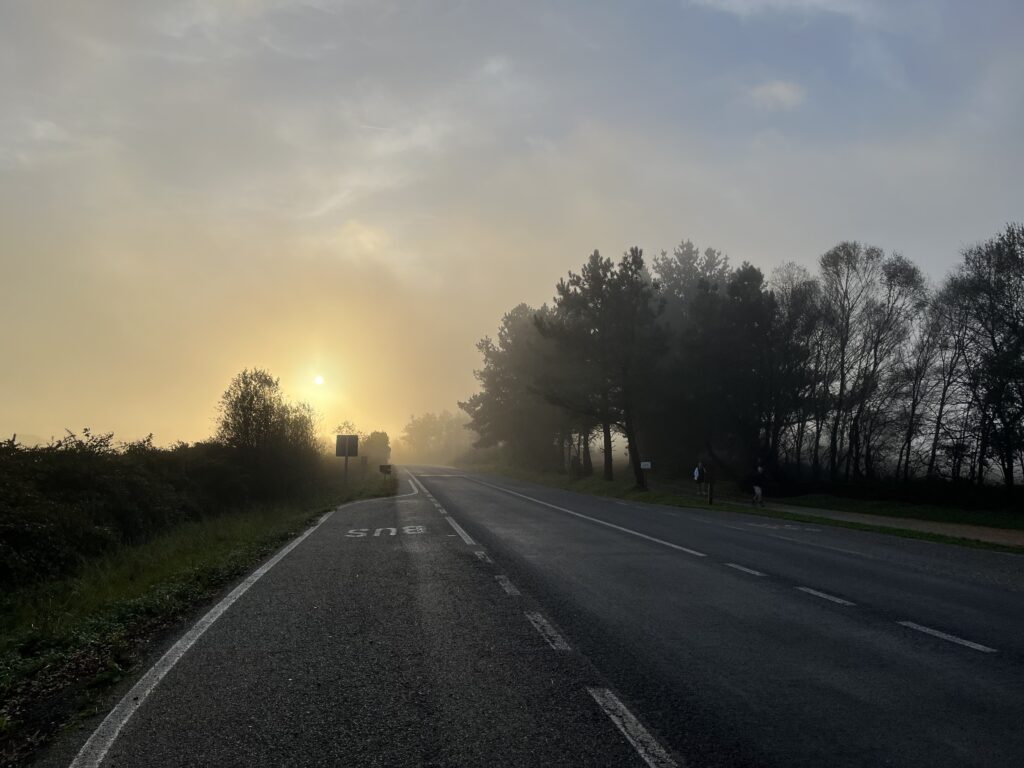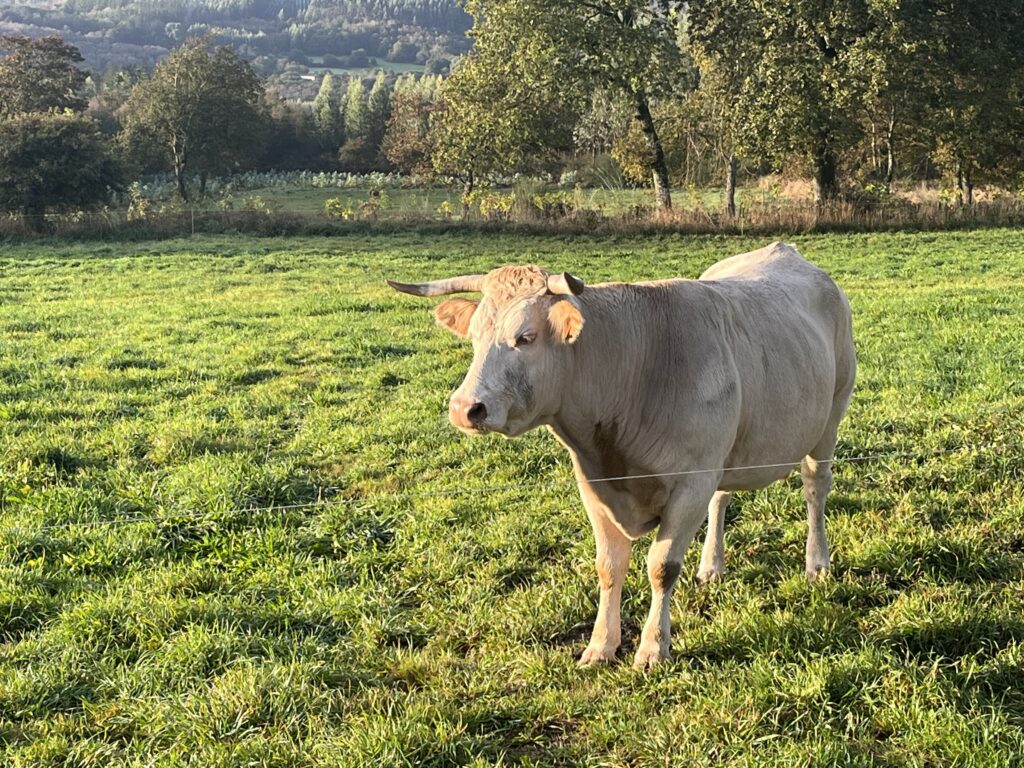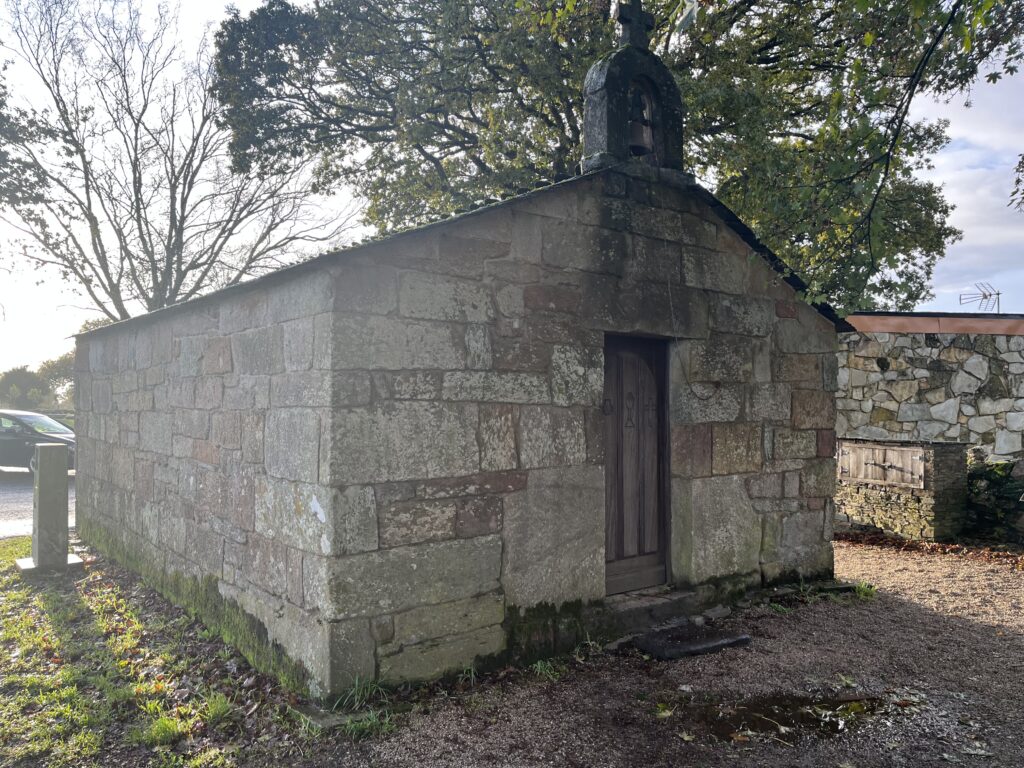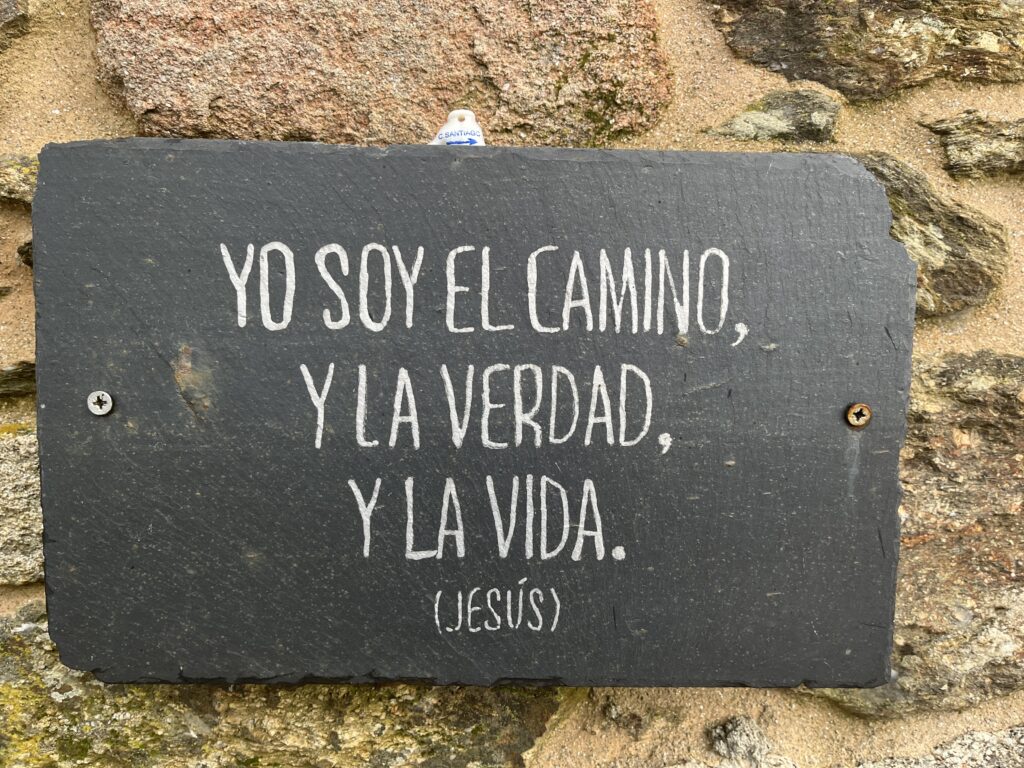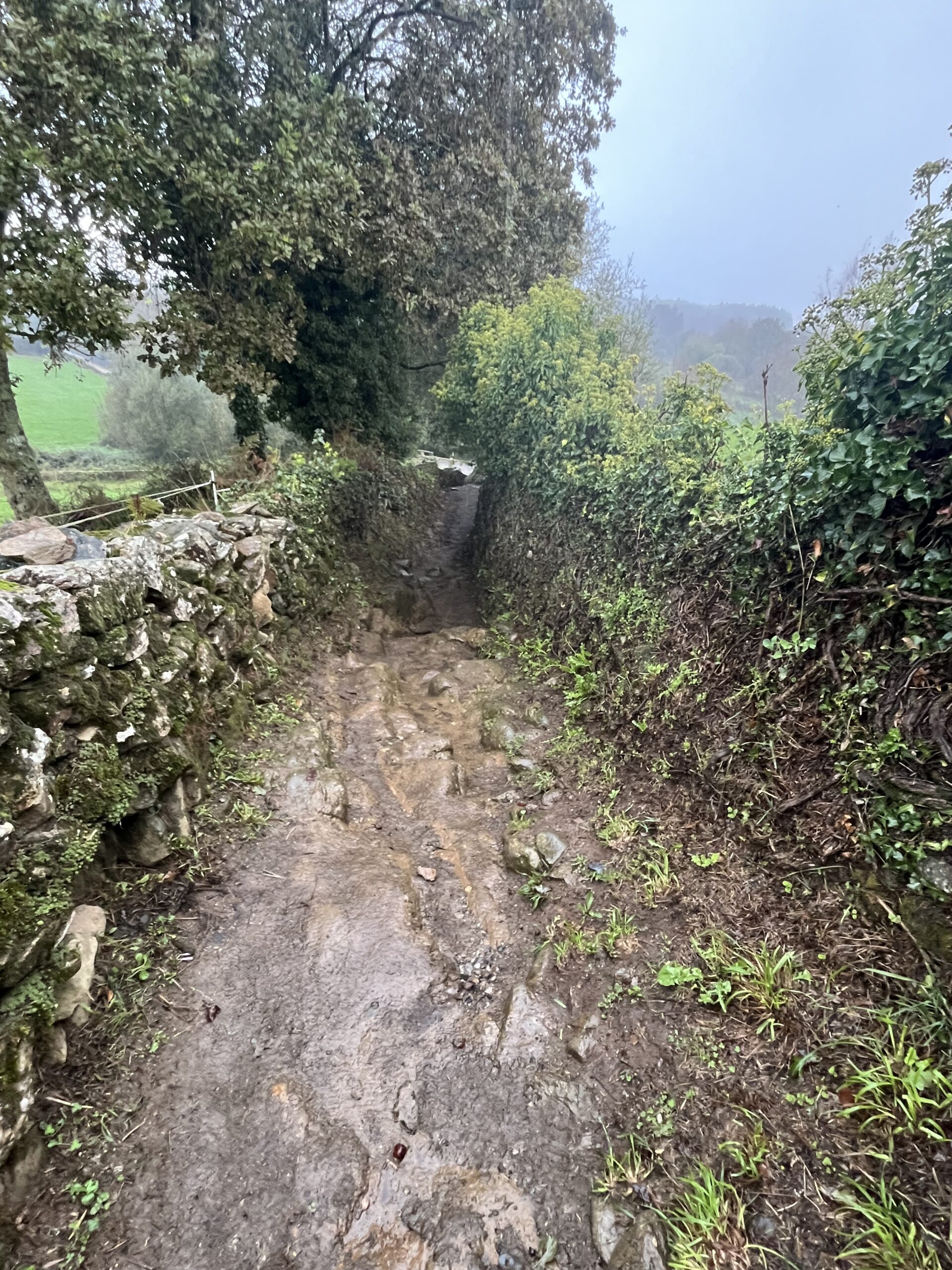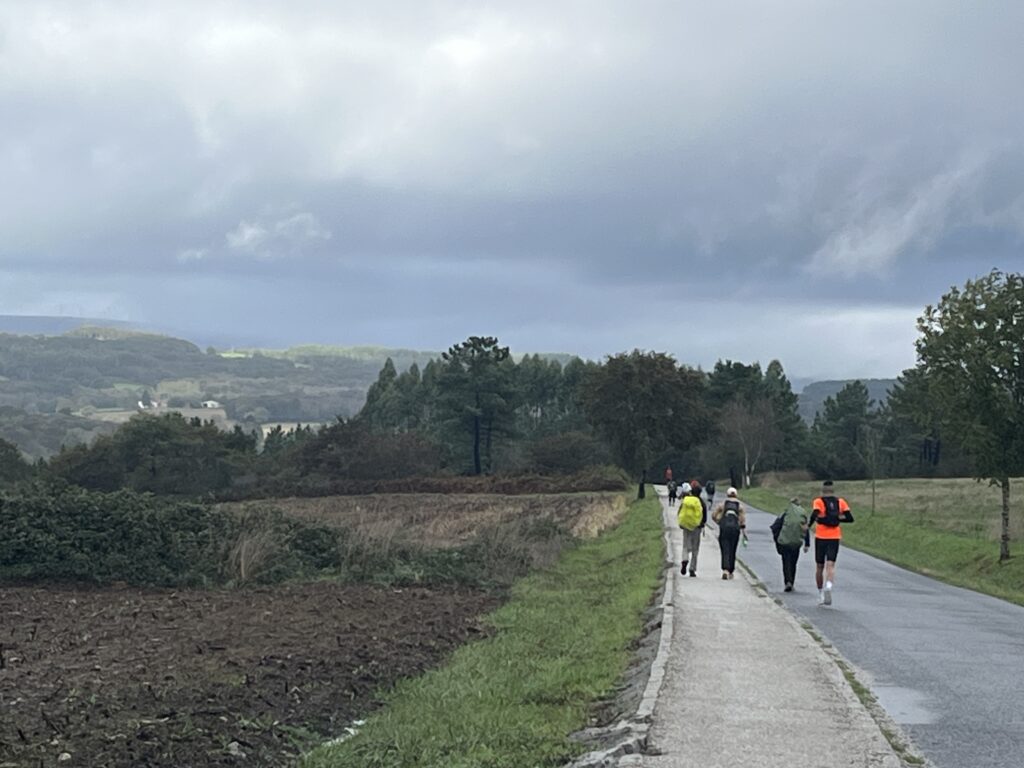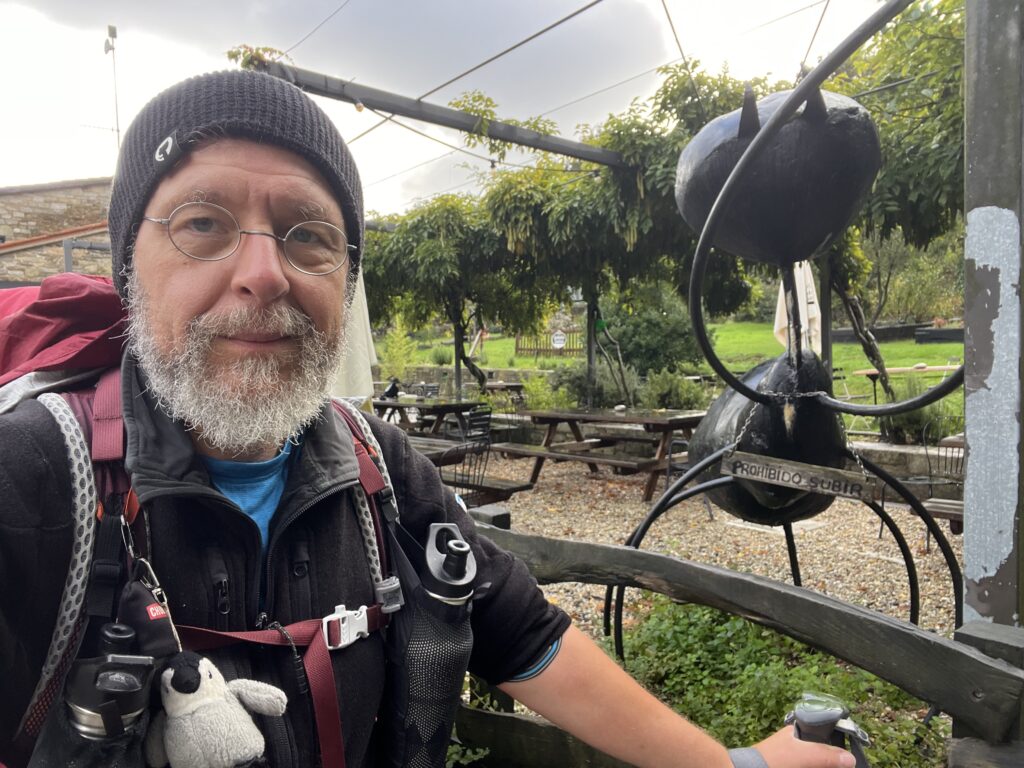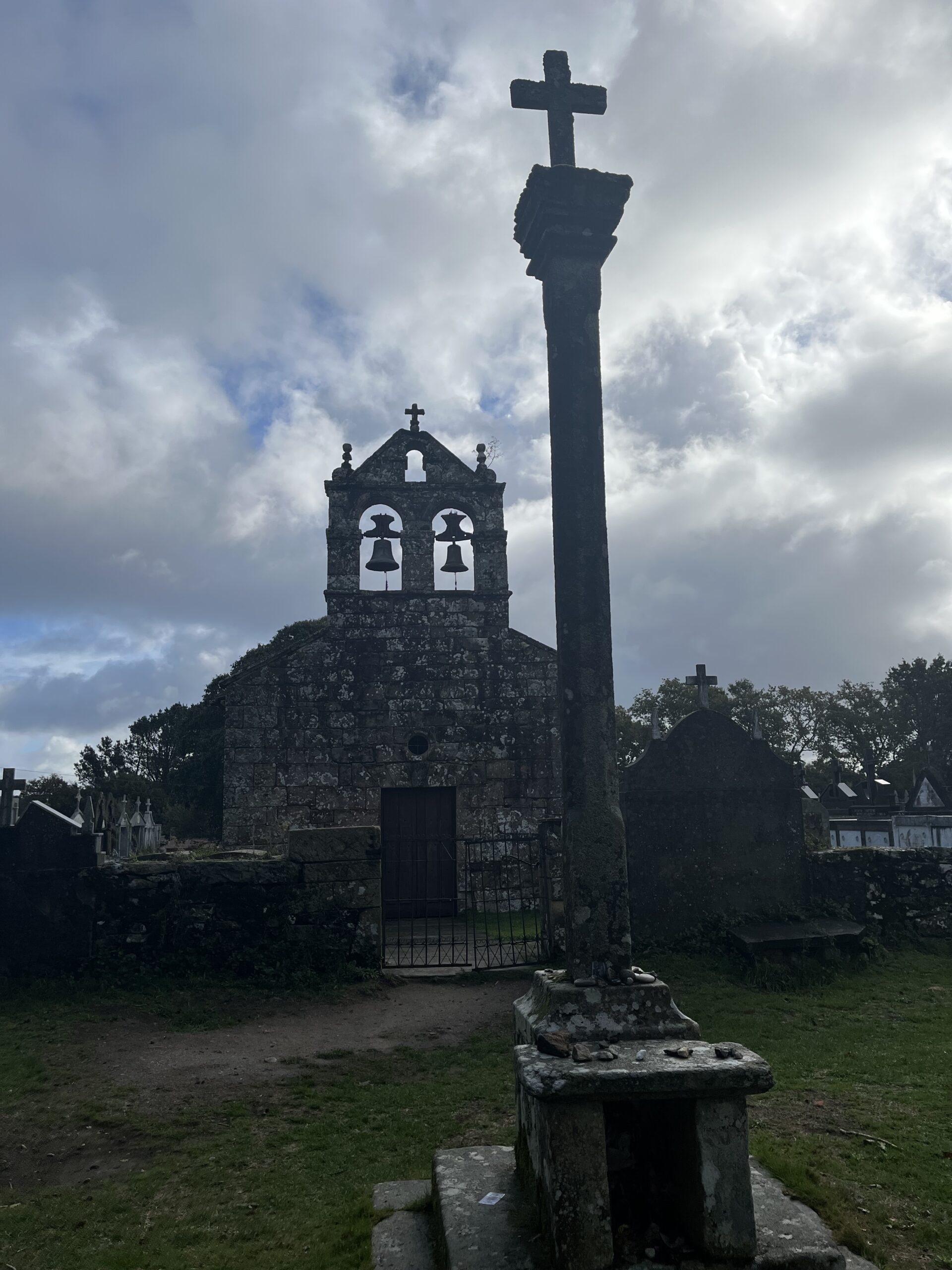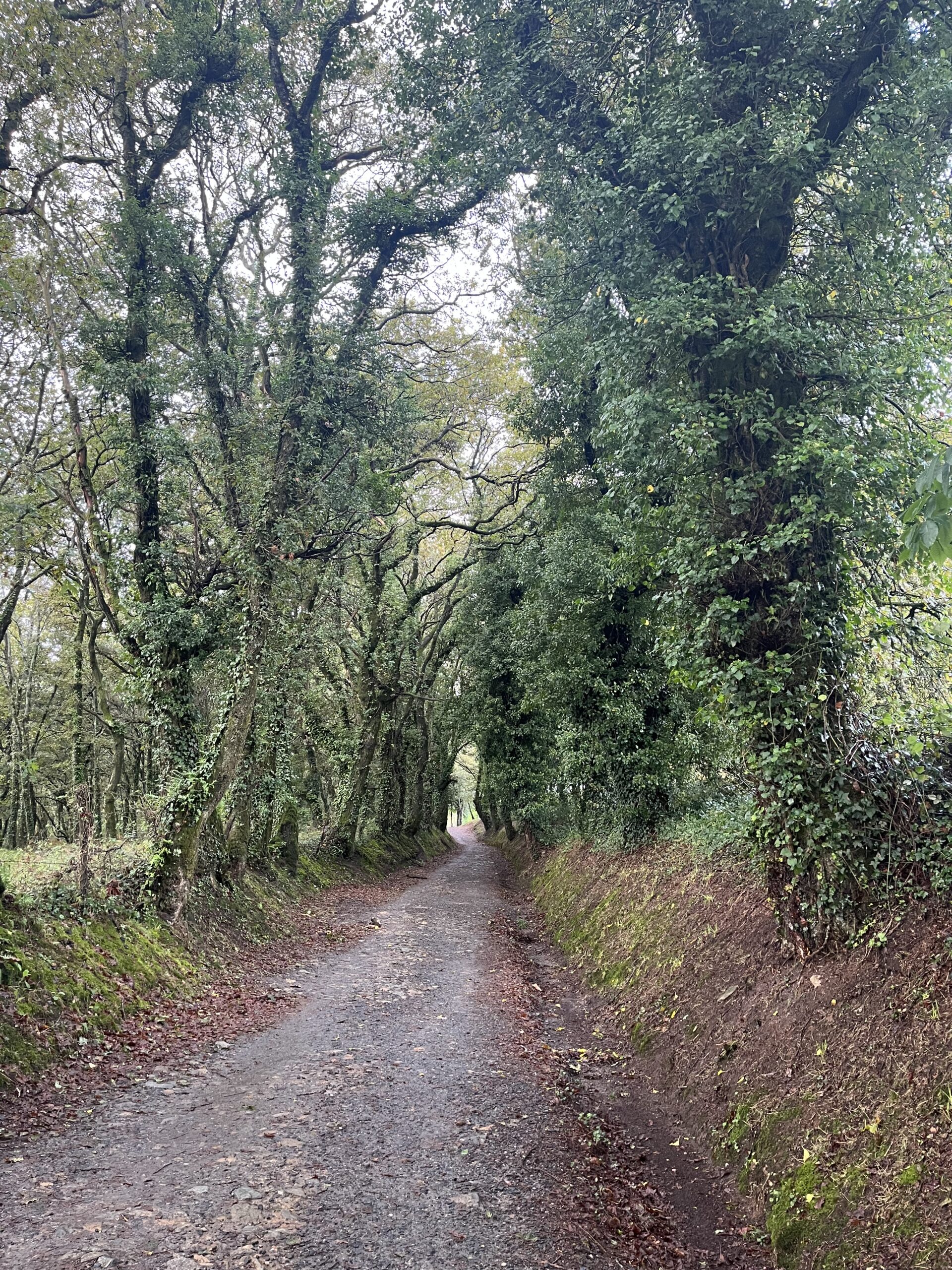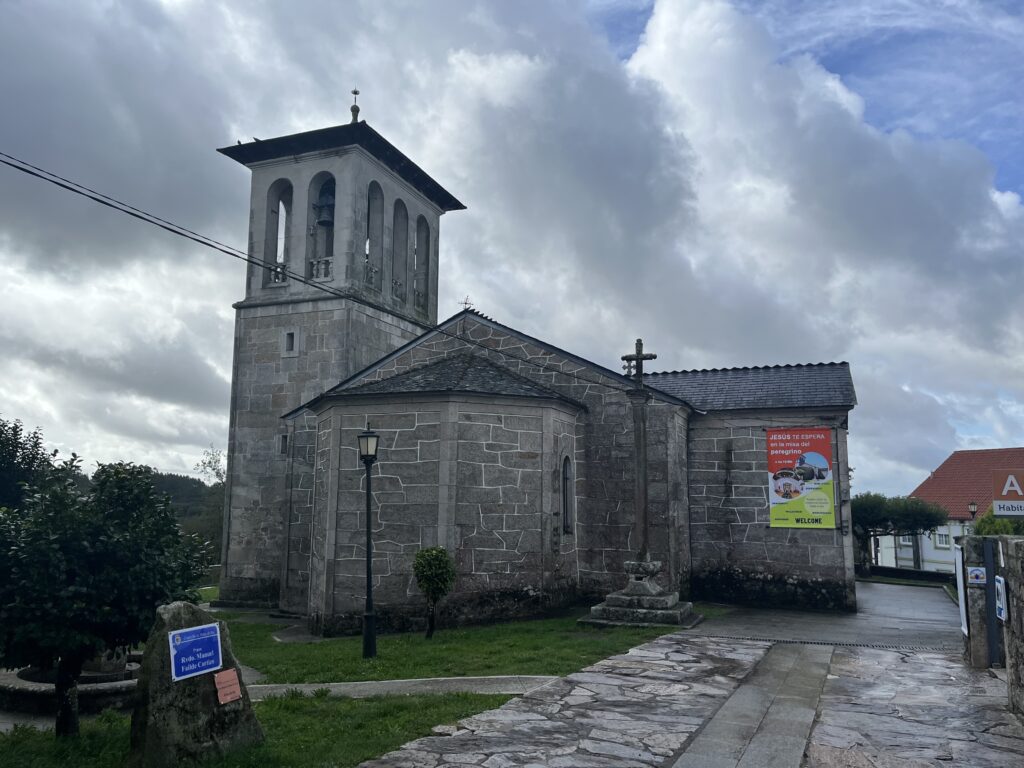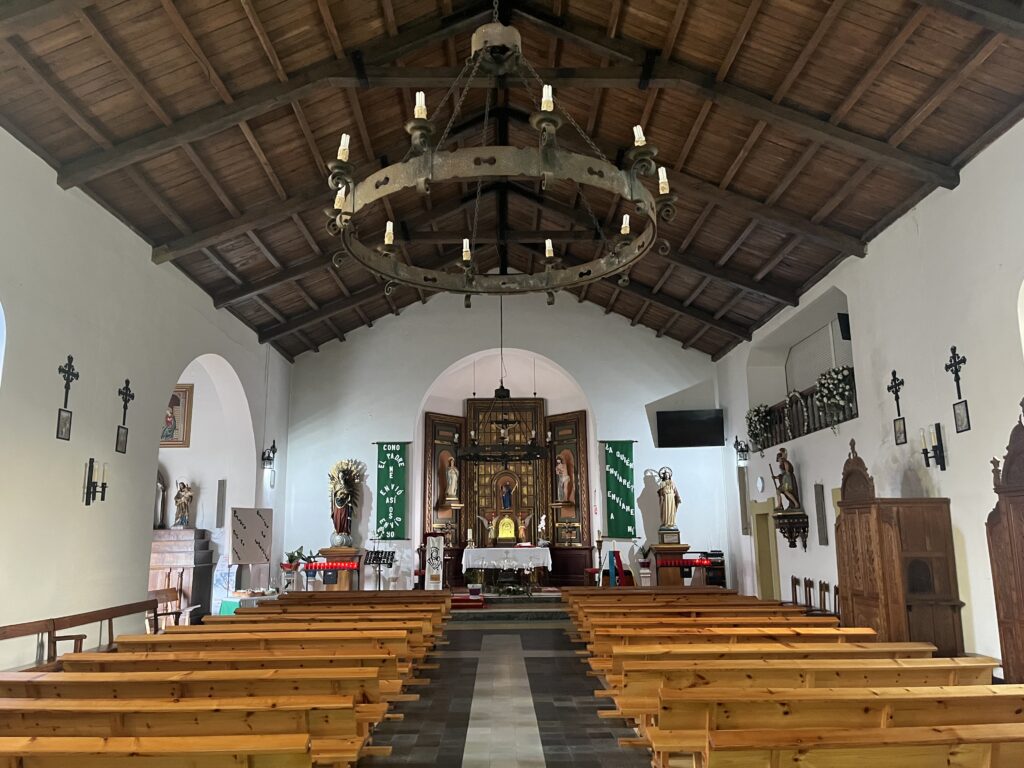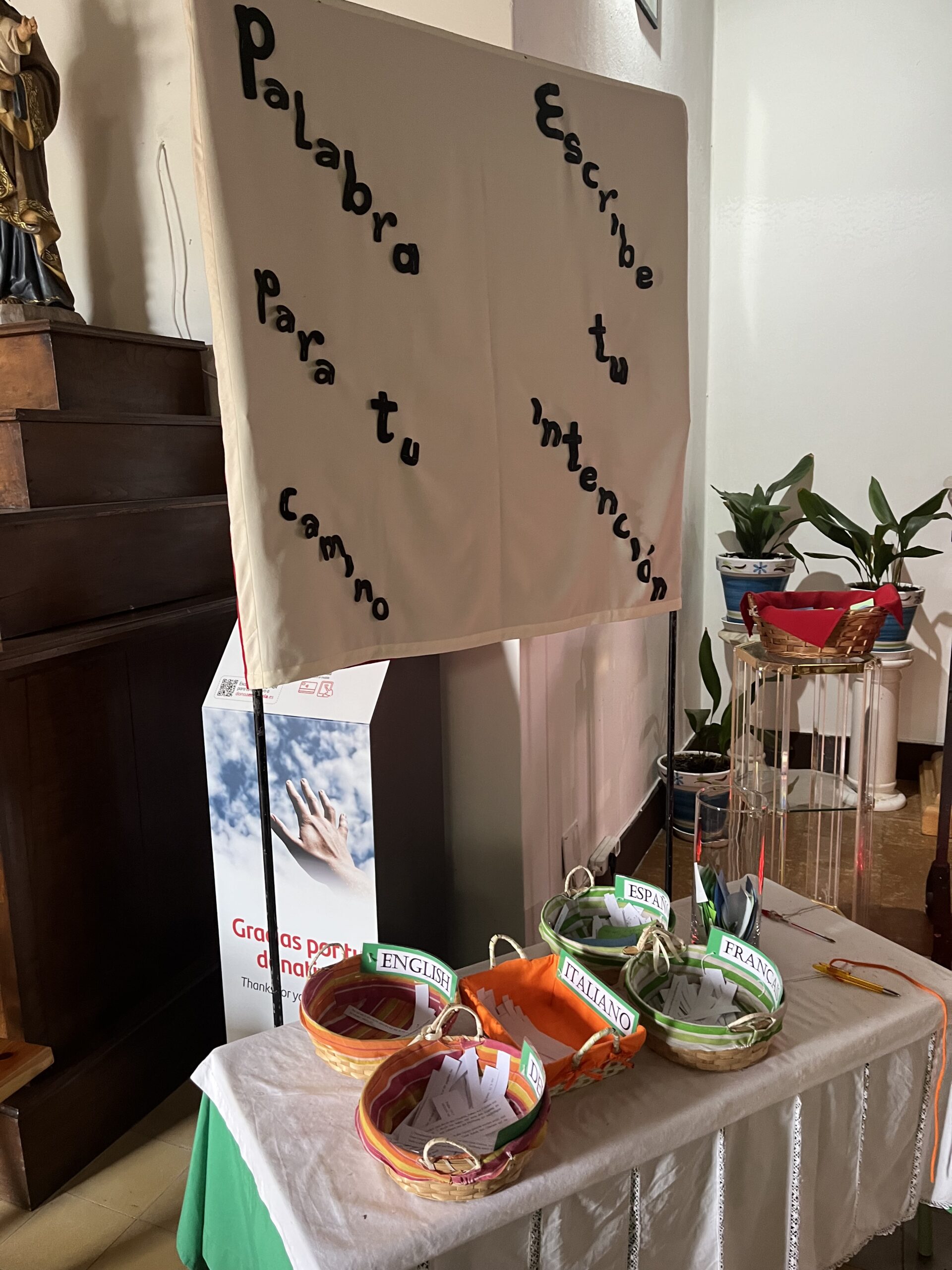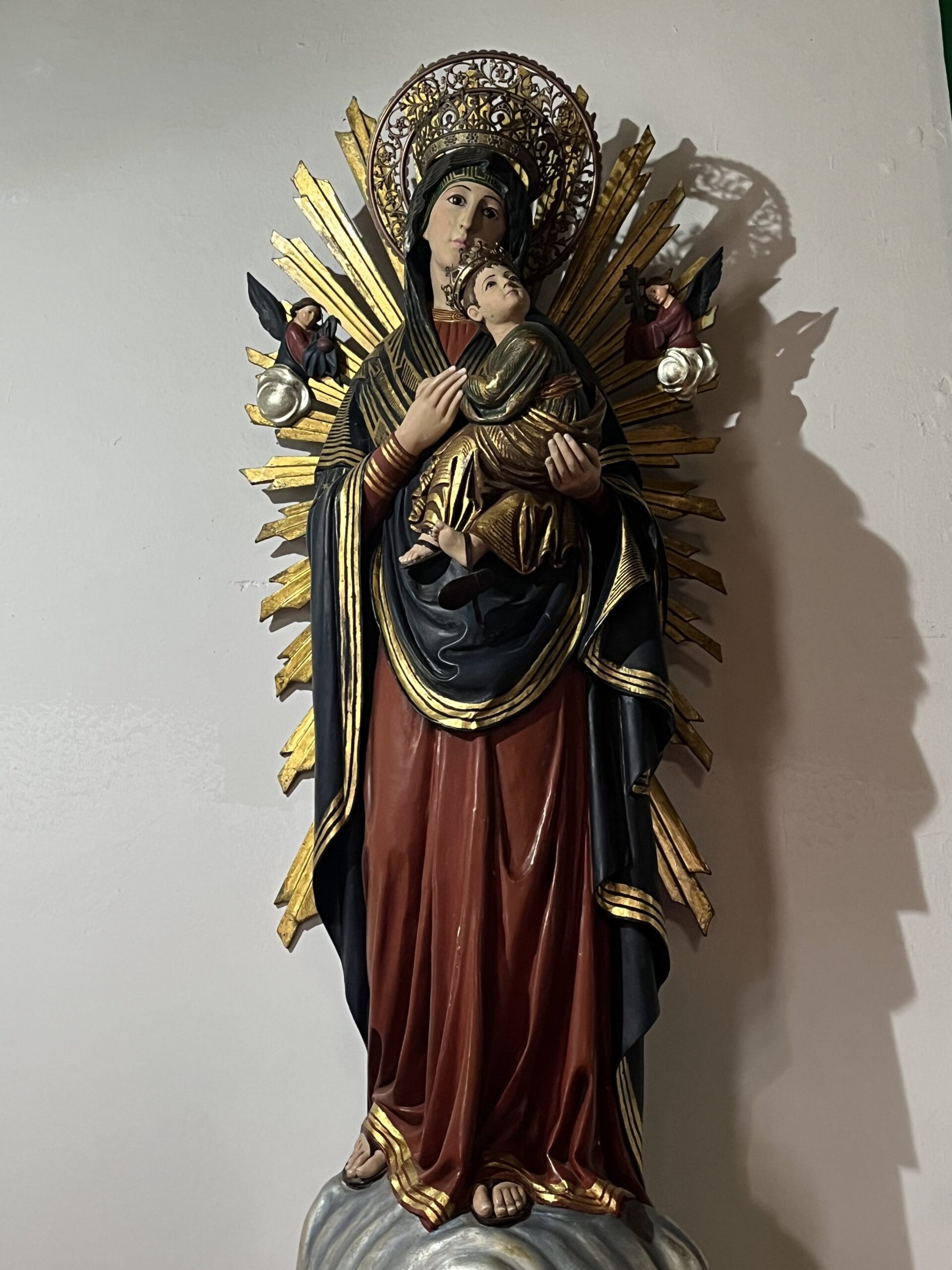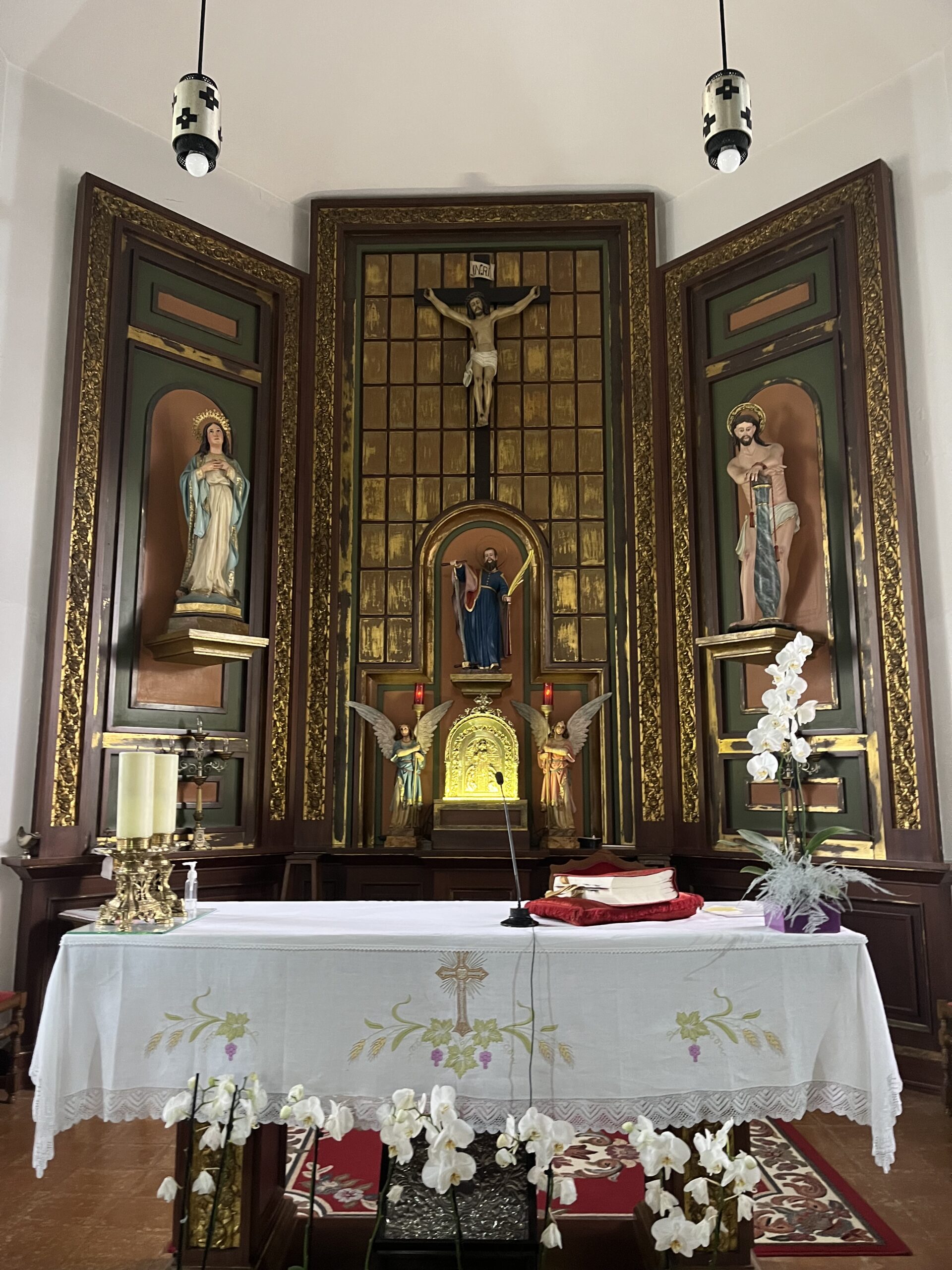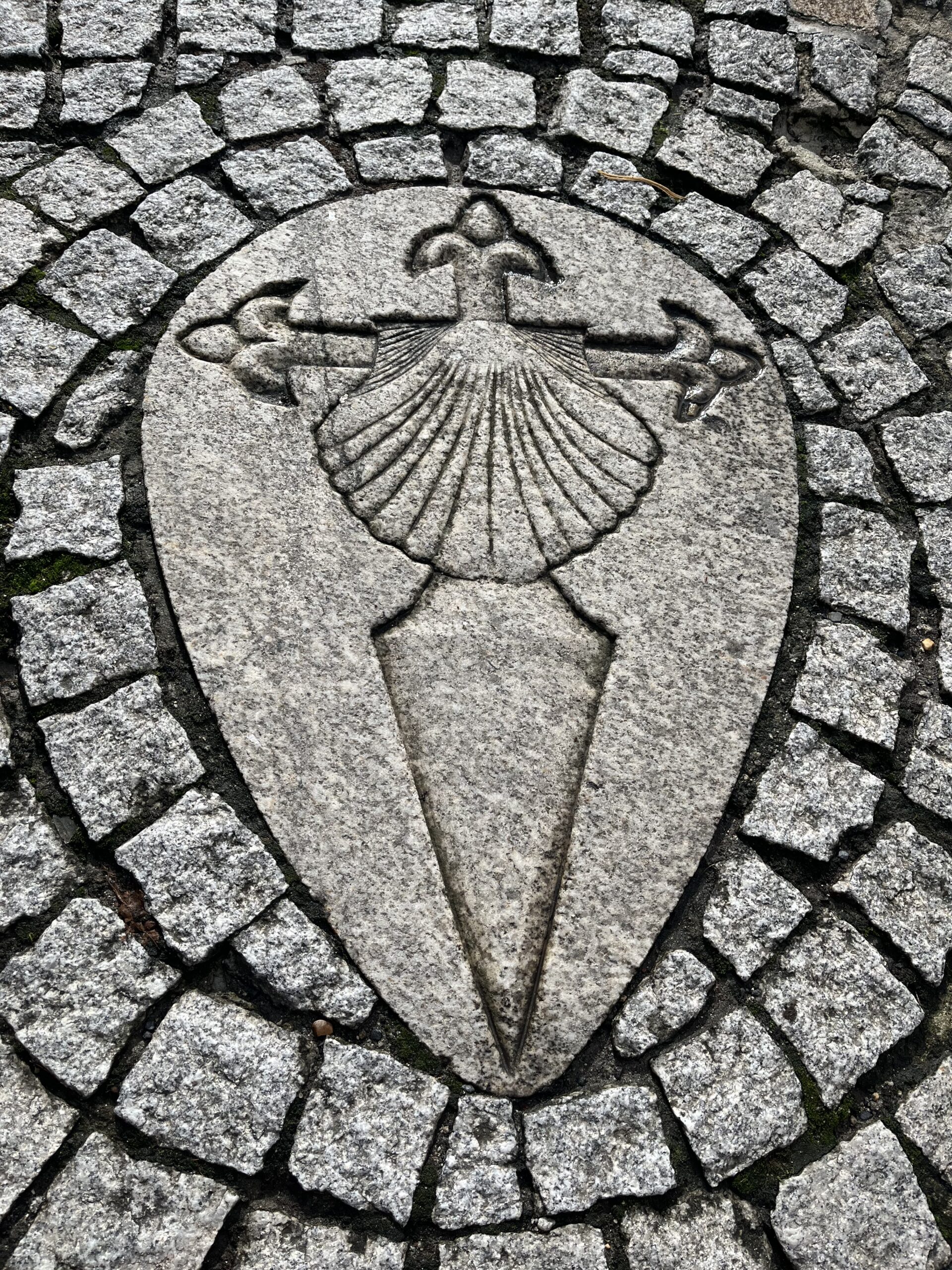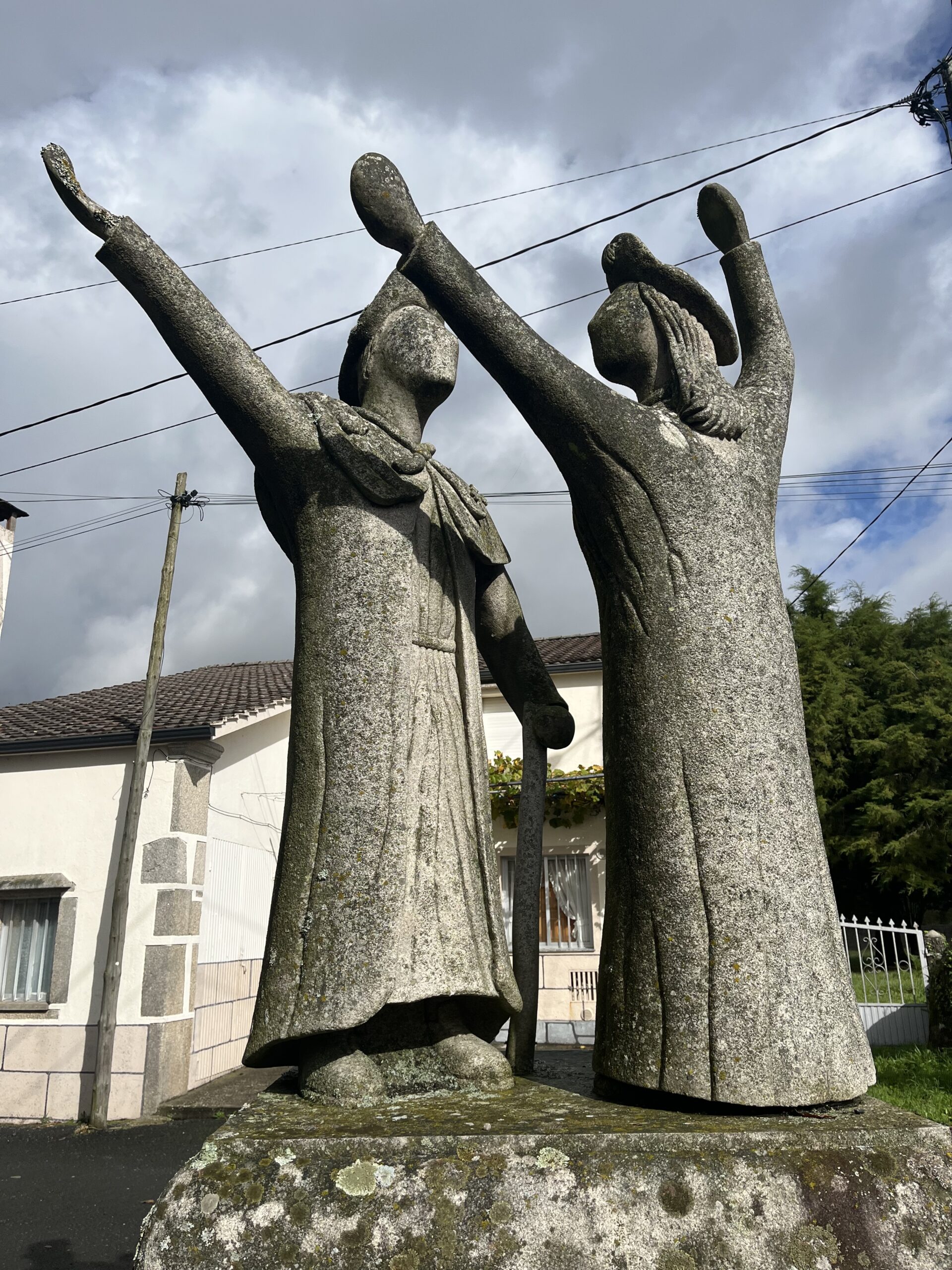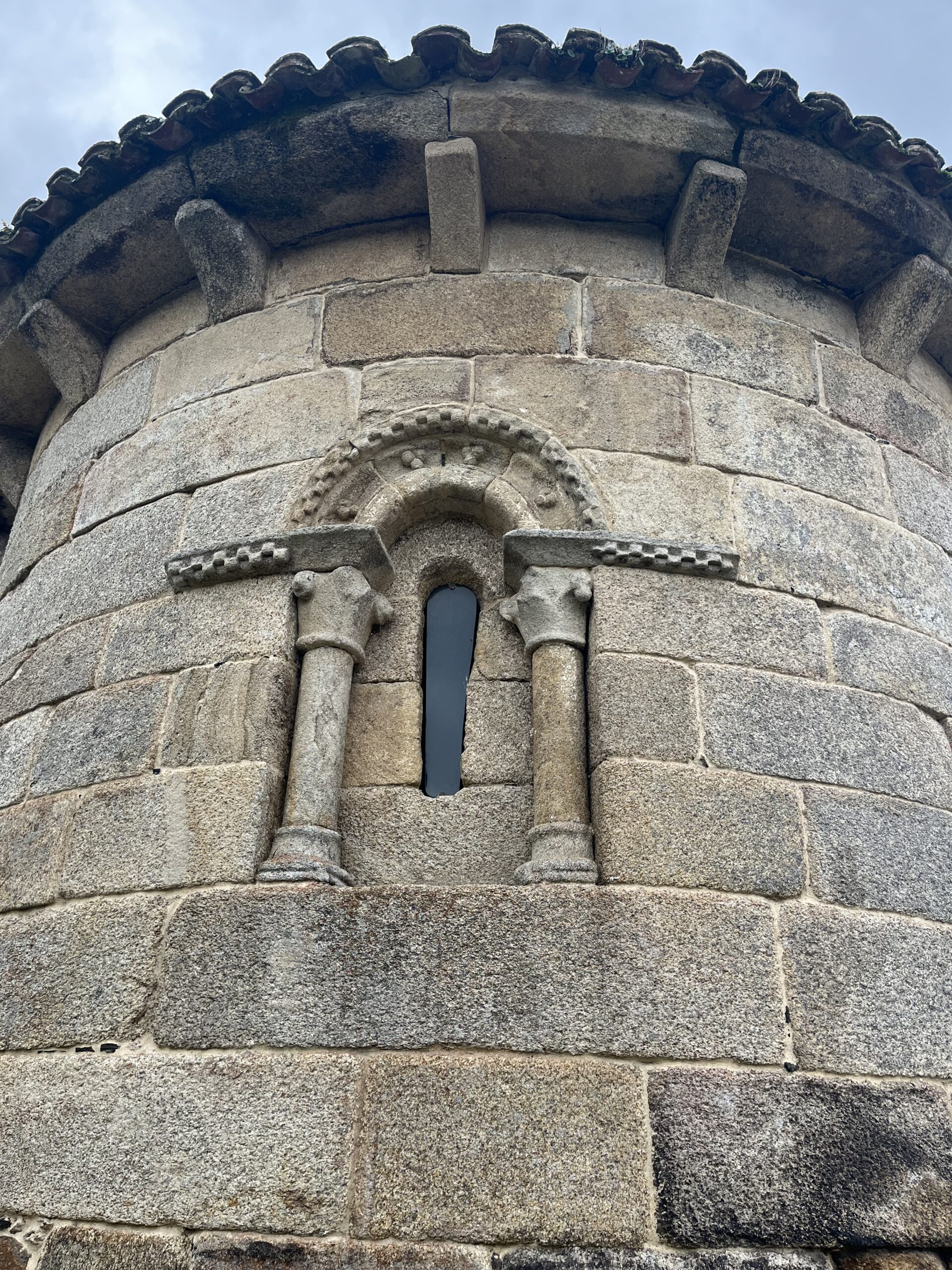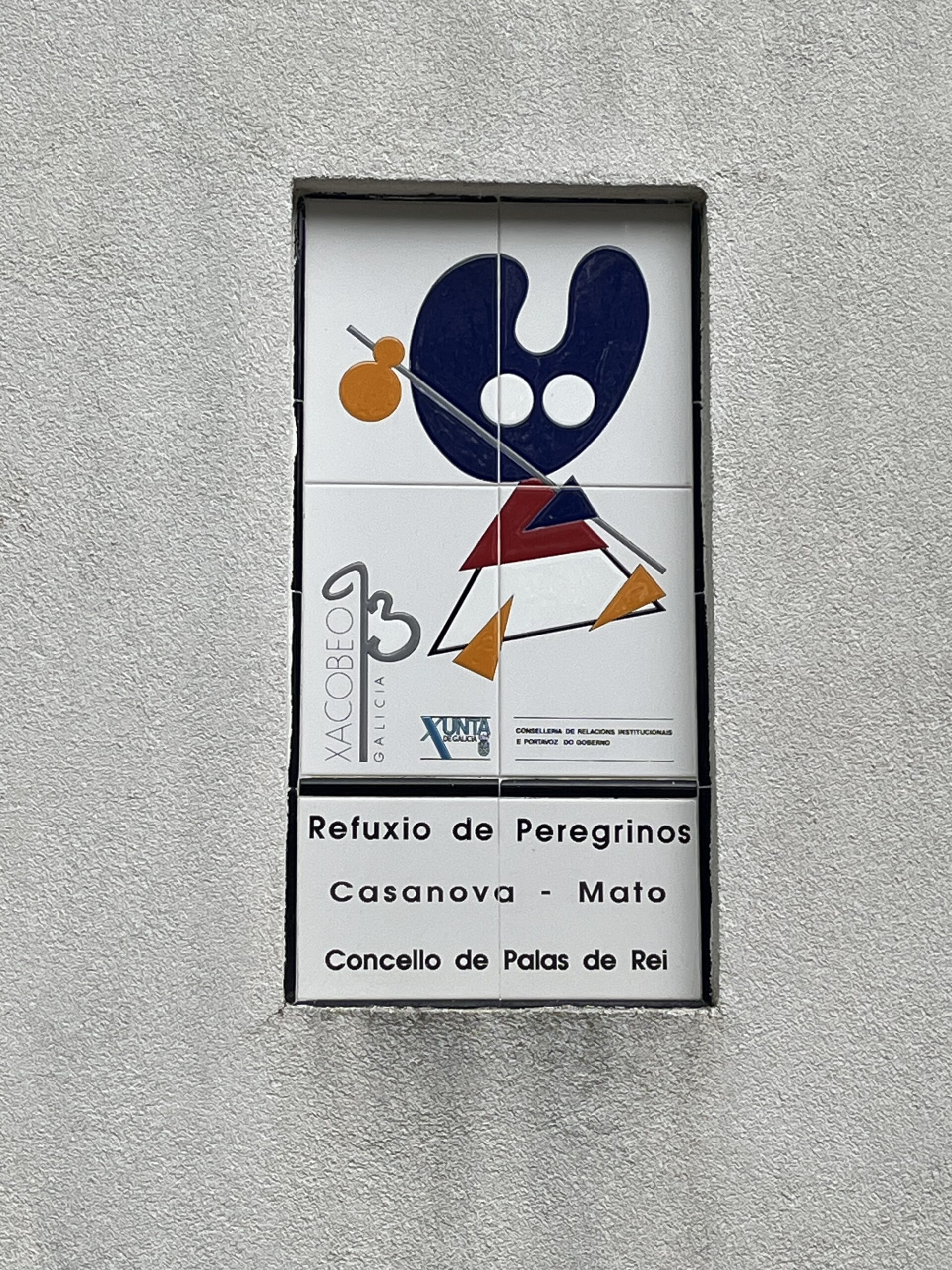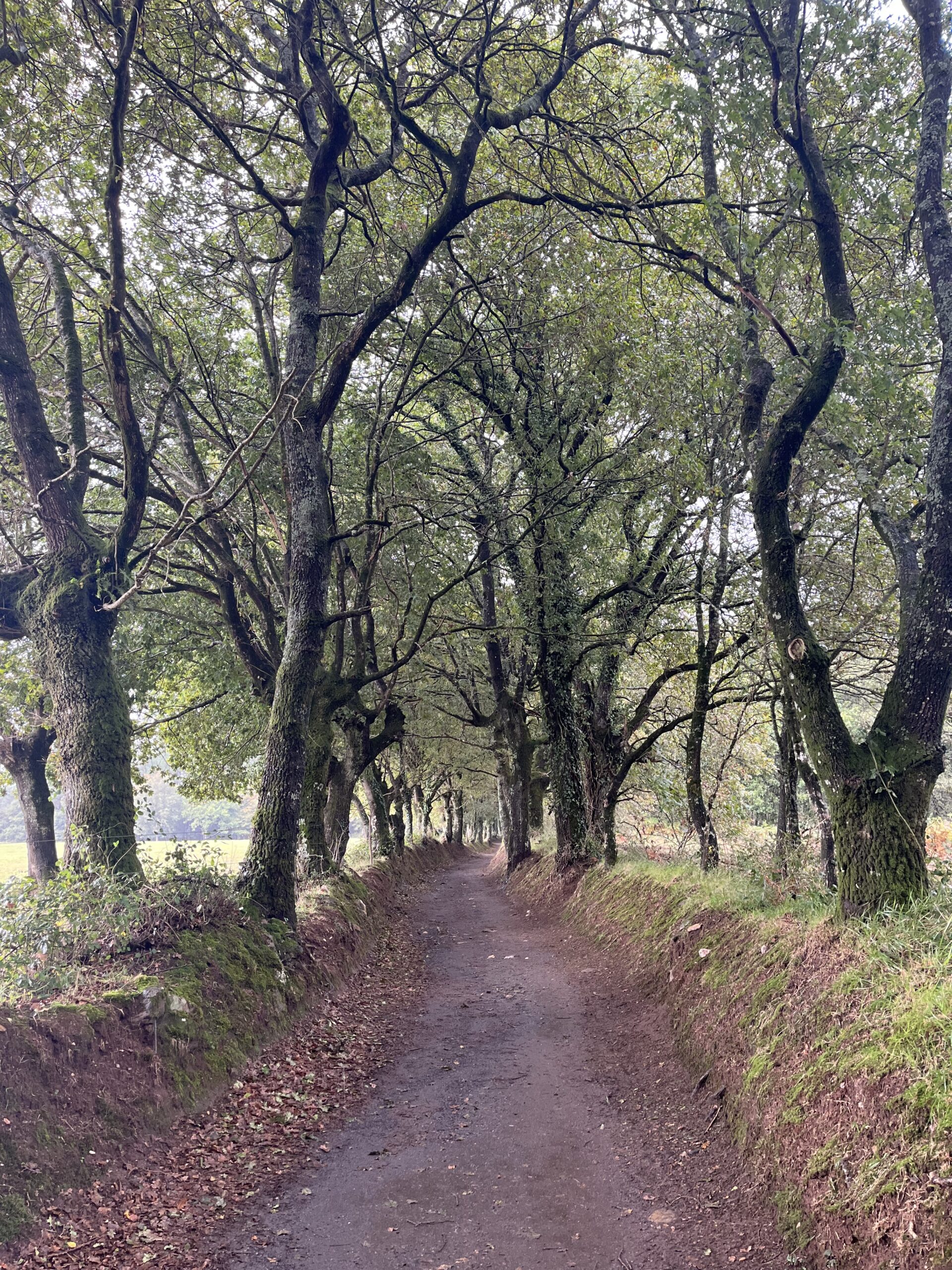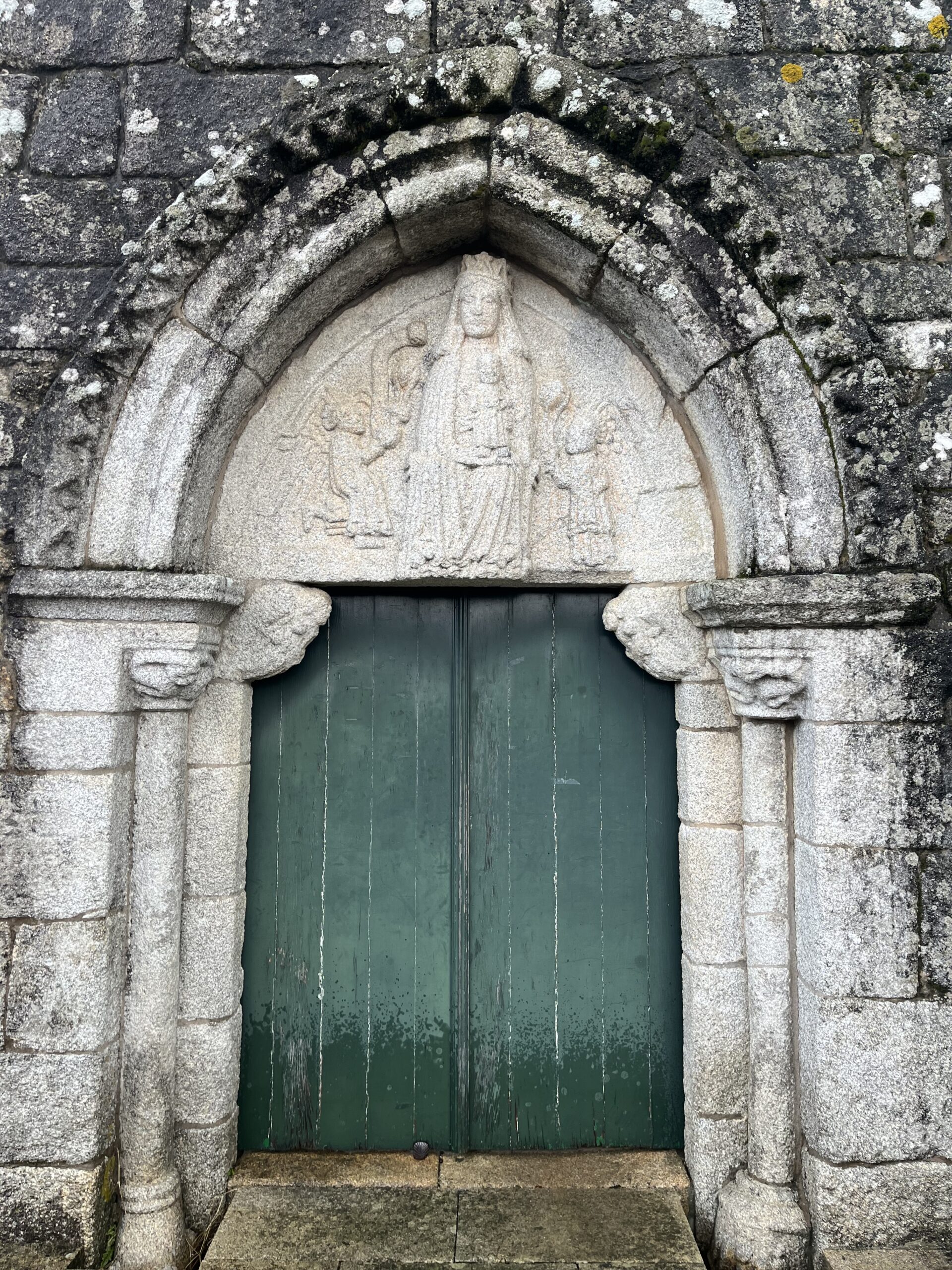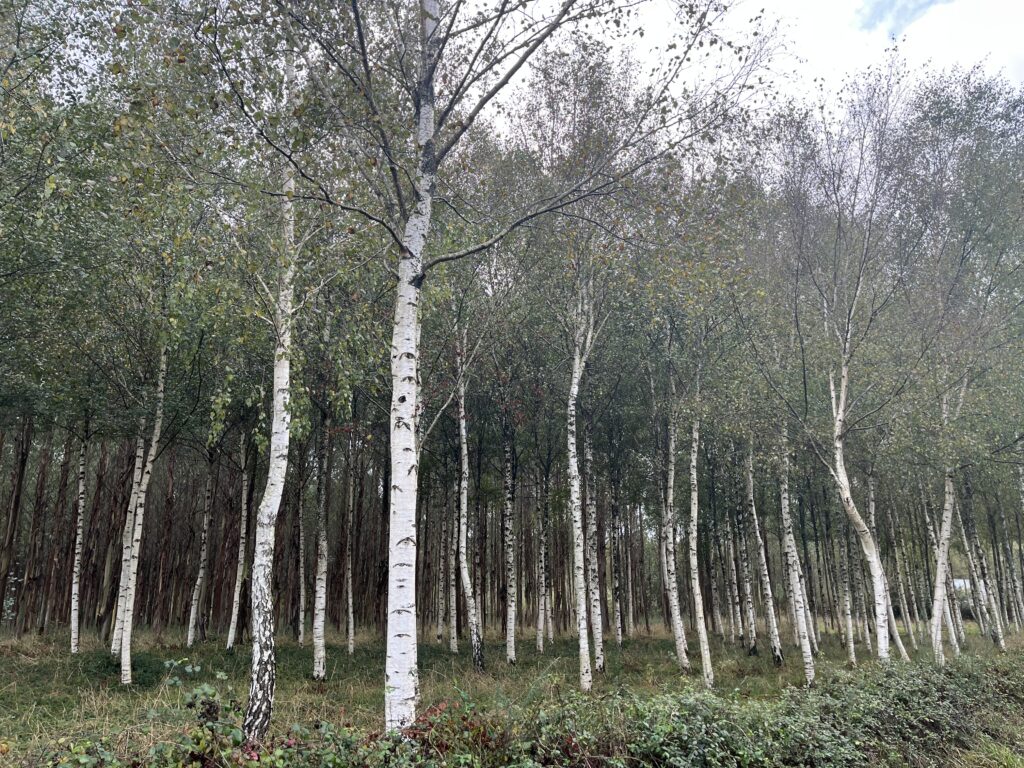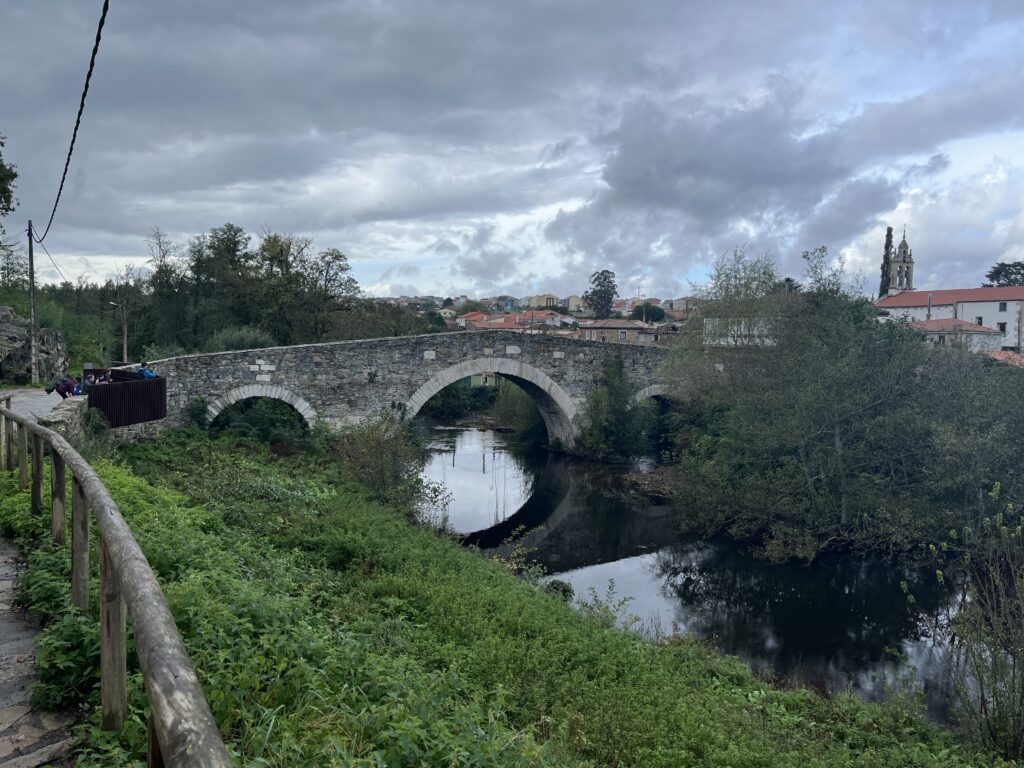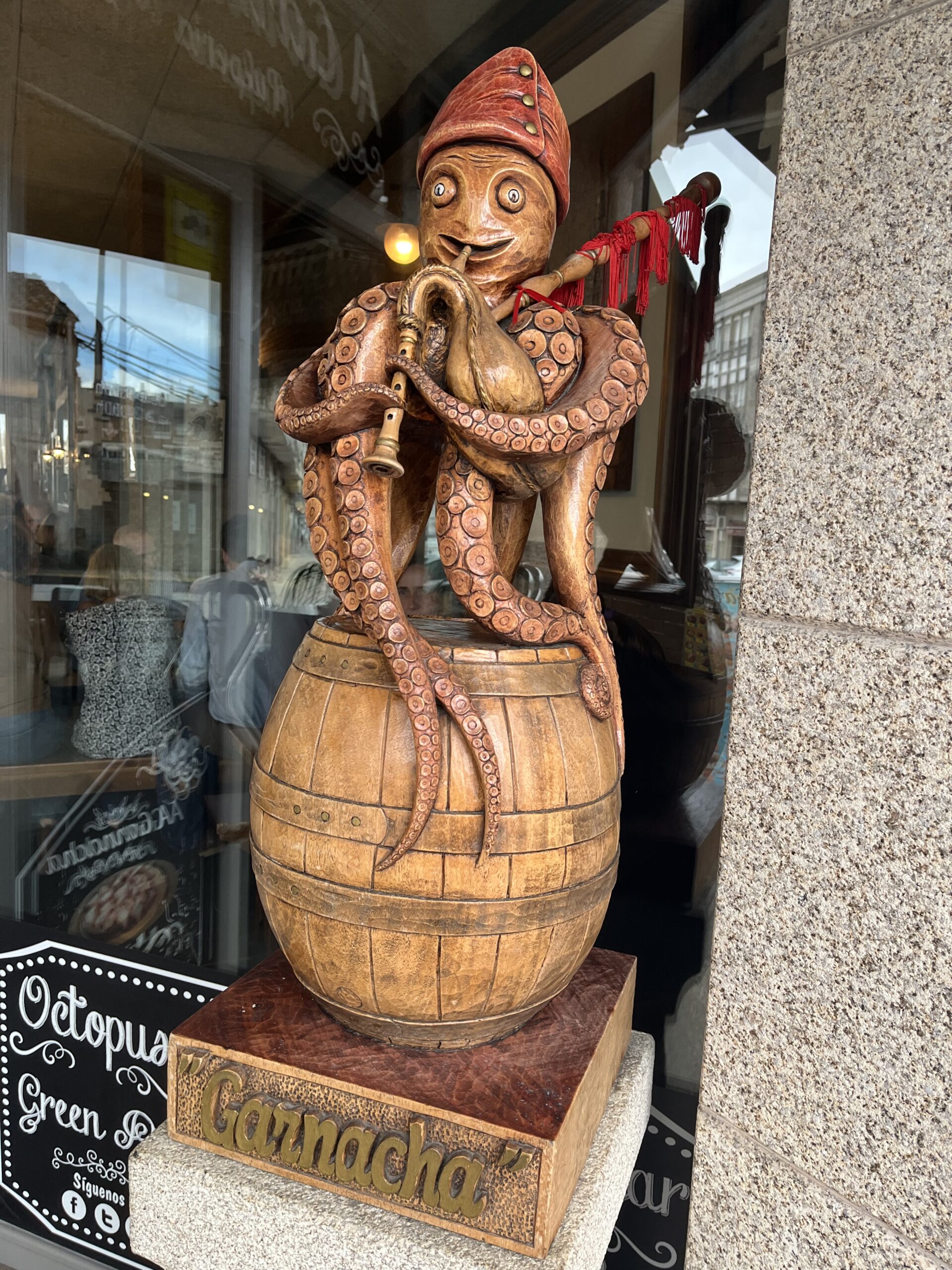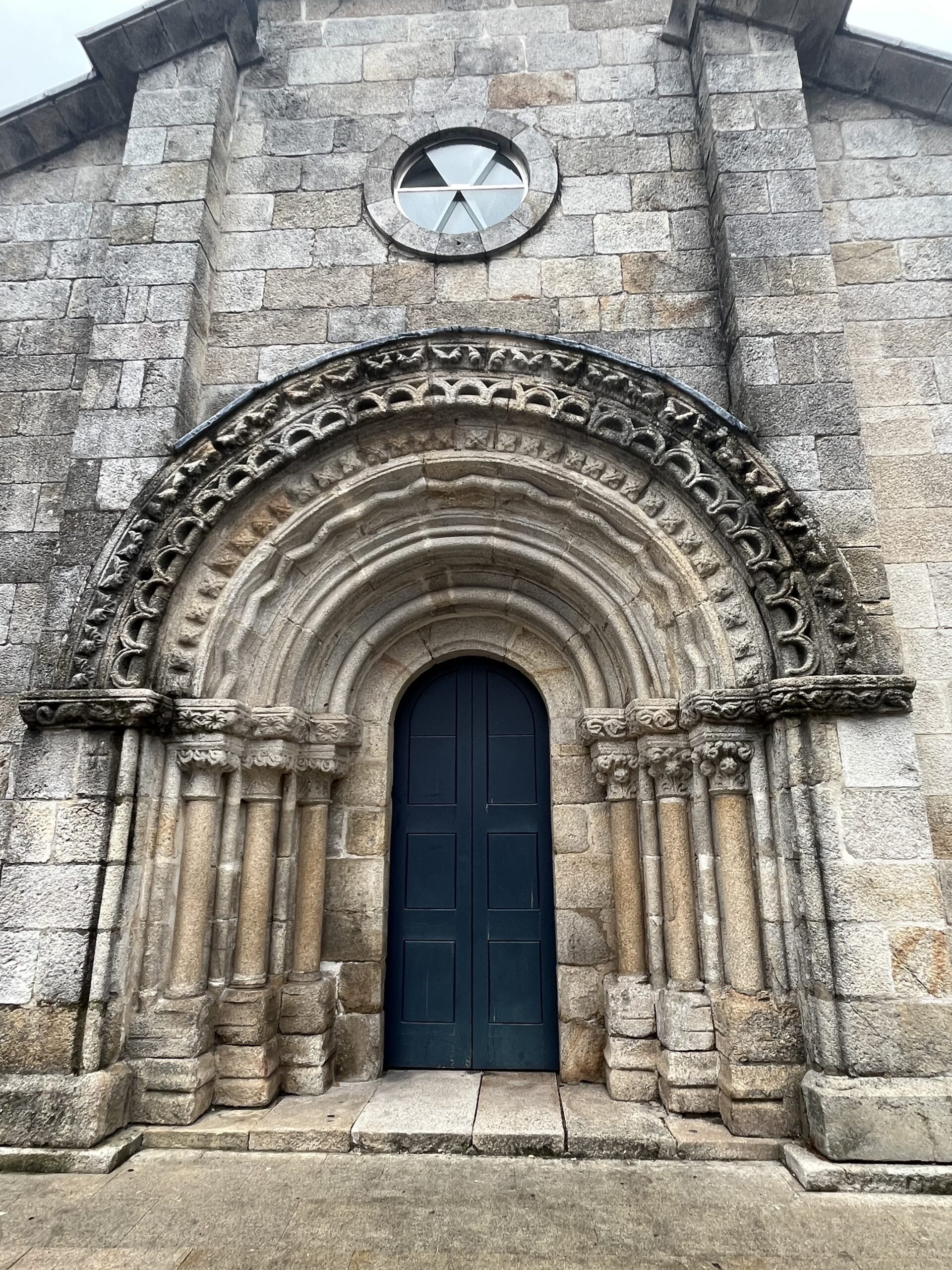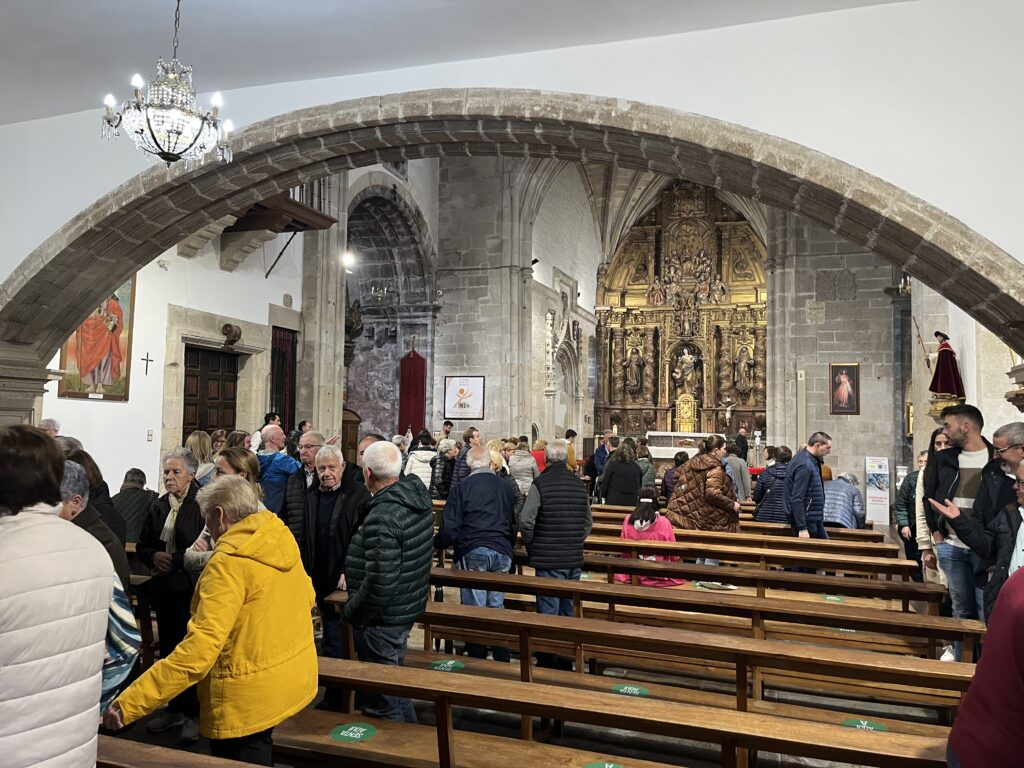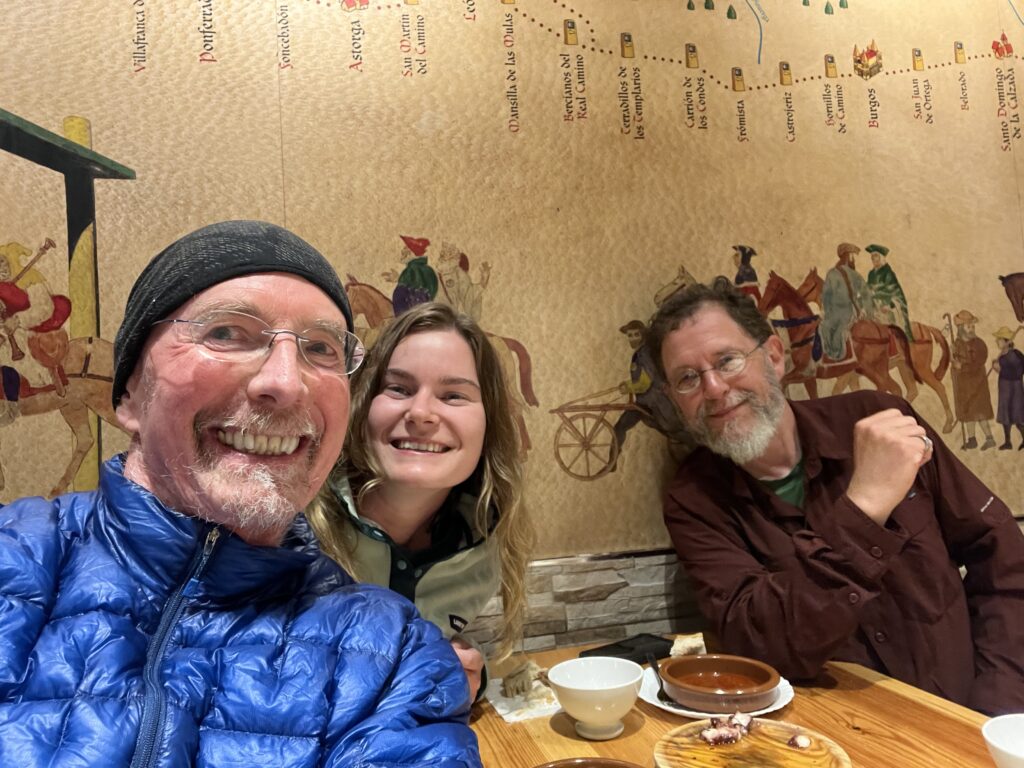Via Podiensis: The Peculiar Details
This morning I again woke up at 7:00 AM rather than my customary 5:00. Maybe seven is the new five? I suspect it is a combination of fatigue – I really need to lay on a couch for a couple of days – and the fewer hours of daylight. In any case, the albergue café didn’t start serving breakfast until 8:00, so I figured I’d stay for that and not leave too much before dawn.
It was a cold and foggy morning, cold enough that I pulled out my third hat: a stocking cap. Nice to know that I wasn’t carrying it all this time for nothing. There was a small chance of rain a little later in the morning, so I kept my poncho draped over my backpack just in case.
The Camino began where it left off, as a rough concrete and gravel path beside a two-lane blacktop road, going into the West.
The Camino left the road, traveling through stands of trees along dirt and gravel paths.
Not even a kilometer past Gonzar, I came to the first albergue I could remember seeing with flashing neon signs. We are definitely in the last days of the Camino now.
I passed through a succession of small farming and cattle villages today, all very similar to each other. Consequently, the walking surface changed constantly, from gravel paths to asphalt roads to dirt and stones.
Just after 9 o’clock, I visited Castromaior. This is an archaeological site containing the remains of a pre-Roman settlement. It was inhabited from about the fourth to the first century BC, when it was finally subdued by the Romans.
While most of this very extensive site remains buried (or has been re-buried after excavation), a small section has been partially restored, remaining visible for public view.
After the Castro, the Camino returned to walk beside the road, sometimes right beside it, sometimes farther away – and sometimes on these “farther away” sections, we would pass through or beside a village. It was pretty much a continuation of yesterday afternoon.
I quickly lost track of how many times we crossed over the road. On one memorable occasion, the Camino actually crossed a bridge over a major freeway. By now, the fog had cleared, and I was walking a dirt path beside a single lane road.
After a while, the path began to narrow and eventually ended. Now I was roadwalking with meadows of cows to either side.
At about 9:45, I reached the Capela da Magdalena, a tiny chapel that reportedly has Templar origins. Though it was unfortunately locked, I prayed outside for the intentions of the Camino before continuing.
The Camino continued up and down shallow hills, but it began to seem as though there were more downs than ups. I got the roadside path back. The pastures now were now more and more giving way to forested land.
By about 10:20 AM, I had entered the long village of Ligonde, about 9 km into the day’s walk – pretty close to a third. This was the part of the morning that the forecast said has the highest chance of rain, and it was definitely overcast now. My plan was to duck into a café here for second breakfast.
It was a good plan, but there was one fatal flaw. The place I had expected to stop was already closed for the season.
As the rain started, I pulled on my poncho. The Camino left the road entirely now for a rough path of dirt and stone. This treacherous little stretch was apparently just a shortcut back to a different section of the road. Pretty soon, it was the familiar gravel path next to the asphalt road.
In the hamlet of Airexe1, I attempted to visit the (much restored) 13th century Church of Santiago. When I found the doors locked, I nevertheless prayed there for the intentions of the Camino, and I added an intention about finding some open churches in Spain.
What I did find, less than three minutes later, was an open café for second breakfast. It was 10:50, and I had walked about 10.5 km.
Twenty minutes later, I was back on the road with a little more pep in my step. The rain had stopped, though it was still overcast and quite cold.
I walked out into a long ragged line of pilgrims, and I probably saw more folks on the trail in the next few hours than I had seen on any given day since very early in Spain.
At about 11:30 AM, I passed A Paso de Formiga, one of the great iconic cafés of this part of the Camino. I did stop briefly to take some photos of the giant ants – because how could you not take photos of the giant ants? – but I did not go inside. I had many more kilometers to go before the end of my day.
I passed another locked church, Cruceiro out front and nestled in its surrounding graveyard.
The long litany of tiny villages, hamlets, and farmsteads culminated in A Brea, the last little spot before entering the long slog to the town of Palas de Rei. After A Brea, the path moved away from the road for a while before returning. It was a rubbly sort of concrete and stone mix, occasionally smoothing out into simple dirt. or, you know, large mud puddles.
Finally, about 12:20 PM, the Camino made its definitive break with the road and headed directly towards the town.
The path was sometimes wide and irregular slate stones, and sometimes wide gravel road, sometimes with buildings to both sides, sometimes through long stretches of forest or parkland. Signs proclaimed this to be Area Recreativa Os Chacotes. Here I passed numerous holiday camp style lodgings. There were picnic areas, playgrounds, and sports fields a plenty. There was even a tourist information booth, where I got my pilgrim credential stamped.
At about 12:40, the parkland path deposited me more or less in the middle of town.
I stopped first in the 12th century church of San Tirso, which was heavily “restored” in recent centuries. The interior of the church is simple in a way that Romanesque churches of this size very rarely actually were. Nevertheless, it has a homey sort of charm. And it was open.
I lit a candle here and prayed for the intentions of the Camino.
They also have a lovely tradition of having scripture verses that you can pick out of a basket at random. Here was mine.
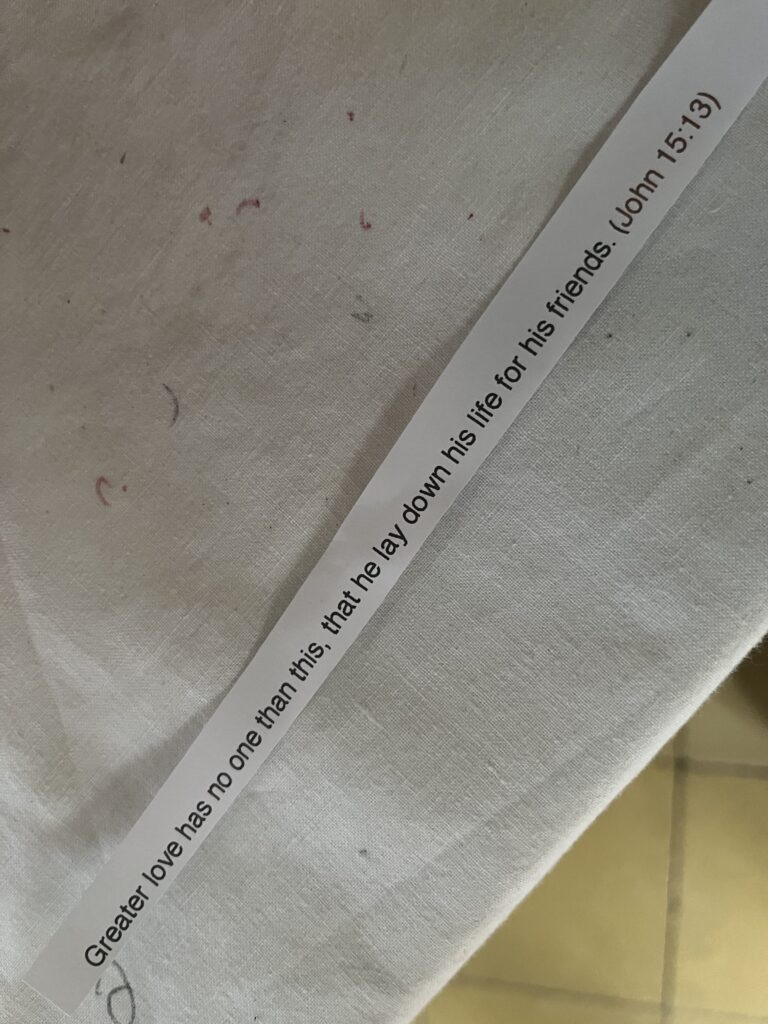
I had hoped to eat lunch in town, but despite the large number of bars, cafés, and restaurants here, I could not find one that was actually open. So instead, I followed the Camino out of town, down a stone paved alley past back gardens and empty lots. The Camino turned down an asphalt street through an old neighbourhood that looked like it might have been its own village once, and past a statue of some triumphant faceless pilgrims.
Eventually, I found myself walking on a sidewalk next to a four-lane avenue. It was here that I found a place to grab a quick lunch.
And then I followed that sidewalk right out of town. Soon it turned into a gravel path which left the road and traveled through woods and fields and farms, not to mention an assortment of small villages. And somehow, the Camino would always return to the road for a stretch before leaving it again.
This afternoon, I passed the locked churches of San Xulián do Camiño, Santa María do Leboreiro, and most disappointingly San Xoán do Furelos.
At some point it started raining again. Really, properly raining. There was a steady rain most of the rest of the afternoon.
By 3 o’clock, parts of the path more closely resembling a stream. My dry sock containment system had failed on both feet.
And then, about 3:15 PM, the terrain noticeably changed. Gone was the winding path and villages; this was now a wide path through groomed forest in parkland. I could hear busy roads in the distance. And the rain has blessedly stopped.
Soon, I was walking through an industrial park, and I knew I only had a few kilometers to go now. Just a couple of minutes later, I caught my first sight of the city in the distance through the trees.
The final approach to the city is through a forest. After a couple of kilometers, this ends at the Río Furelos. An arched stone bridge takes you over the river.
This being the Camino, there is a bar at the bridge. On the other side is Furelos, which may once have been a village but is now a neighbourhood of Melide. I crossed over at about 3:55 PM. from here, I walked to the center of the city through grassy fields, modern neighborhoods, and a business district.
I was checked into my albergue by 4:30.
Today I saw a lot of pilgrims who had clearly started in Sarria. Many of them had no idea how their equipment worked. I saw pilgrims with their backpack hip belts unbuckled and dangling. Inaccessible water bottles in the back stretch pocket of the backpack, sometimes even under a pack cover.
And there were plenty of folks who had trekking poles and no idea how to use them. One fellow was tapping them ahead of him as though he were blind.
I’ve also seen a lot of tiny day packs. Either these are ultralight hikers, or they are sending their baggage ahead of them. In most cases, I suspect it’s the latter.
I understand the need for baggage transfer services. There are pilgrims who are injured, older, or just for whatever reason not capable of carrying their full pack day after day. I get that.
What I don’t understand is perfectly fit young pilgrims doing this. To me, one of the most important lessons of the Camino is the physical lesson of the weight you carry, the physical and the mental and the emotional.
If you have to carry your pack every day, you soon learn to shed the things that you don’t need, or else you consciously choose to bear their weight. It is an important lesson.
Meanwhile, back to the day: I managed to attend the Vigil Mass at the 14th century church of San Pedro. It was packed! Standing room only, and I was one of those without a seat.
Afterwards I ran into David from Montana, who I had met (briefly) a couple of days ago, and Jordan from Kansas, who the both of us met coming out of Mass. We had a fantastic dinner together, with all the pulpo, peppers, red meat, and vino you could imagine. Such a great conversation with such great company.
Date: 21 October 2023
Place: Melide
Today started: Gonzar
Today’s Photos!
